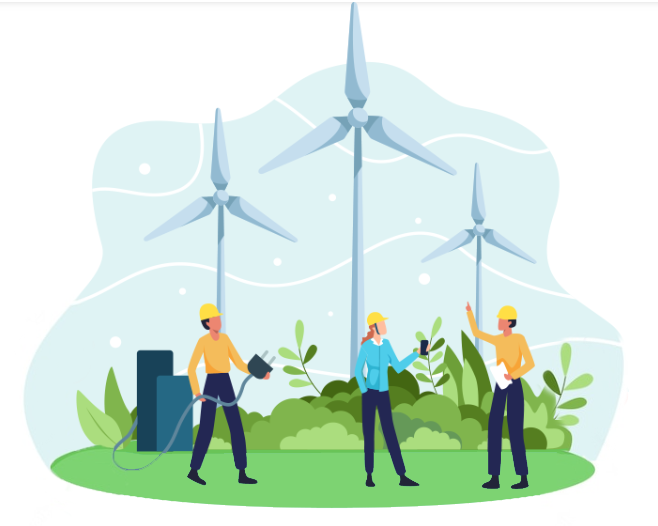The solution to construction’s energy woes is blowing in the wind
Accounting for around 39 per cent of carbon emissions across the globe and one of the world’s biggest contributors to greenhouse gas emissions, the construction industry is under increasing pressure to alleviate the strain placed on the environment during construction activities.
Databuild CEO Morag Evans believes wind energy could play an integral role in the industry’s transition to renewable energy sources.
“An enormous amount of energy is required to power the heavy machinery and equipment as well as the lighting, heating and air conditioning required to complete a construction project,” she says.
“When electricity is not available – either because the site is situated in a remote location that is not on the grid, or the country’s ongoing energy crisis has made the grid unreliable – diesel generators are usually considered as the next best option.”
While these generators are capable of handling large power loads easily and cost-effectively, their main drawback is that they produce high levels of carbon emissions – as much as around 2.7 kilograms of carbon dioxide for every one litre of diesel consumed, not to mention the other air pollutants and dangerous gases such as nitrogen oxide that are also emitted.
Construction companies can minimise this environmental impact by making use of wind energy to power their construction sites, says Evans.
According to the International Renewable Energy Agency, wind energy is one of the world’s fastest-growing renewable energy technologies because it can be deployed quickly and cost-effectively.
In South Africa, the wind has been utilised as an energy source for many decades, especially among the agricultural sector. According to the South African Wind Energy Association, South Africa has 33 wind farms that are either under construction or fully operational.
“With zero emissions and pollution, wind offers a great alternative source of power for remotely located construction sites that have no connection to the electrical grid,” says Evans.
“Erecting temporary wind towers for the purposes of powering a construction project would obviously be costly and impractical, but instead of simply opting for gas or diesel-powered generators, construction companies should collaborate with wind farm owners to procure the necessary energy for their projects.
“As South Africa’s wind farm infrastructure becomes more widely available – the government and Eskom signed off three wind projects recently and more are in the pipeline – it will become more accessible to construction companies, opening up more opportunities for collaboration between the industry and wind farm owners.
“The formation of such partnerships will also benefit the economy over the long term,” Evans adds. “Furthermore, by working proactively to minimise harmful construction practices, the industry will help the country meet its 2050 goal of reducing greenhouse gas emissions to net zero.”
Whether it’s through projects based on renewable energy generation, or the utilisation of environmentally friendly power systems, there can be no doubt that the future of South Africa’s construction industry lies in renewable energy, Evans concludes. “Technological advances are making renewable energy more efficient, accessible and affordable. The more construction companies embrace the implementation of greener energy sources, including wind energy, the more economical it will become.”


